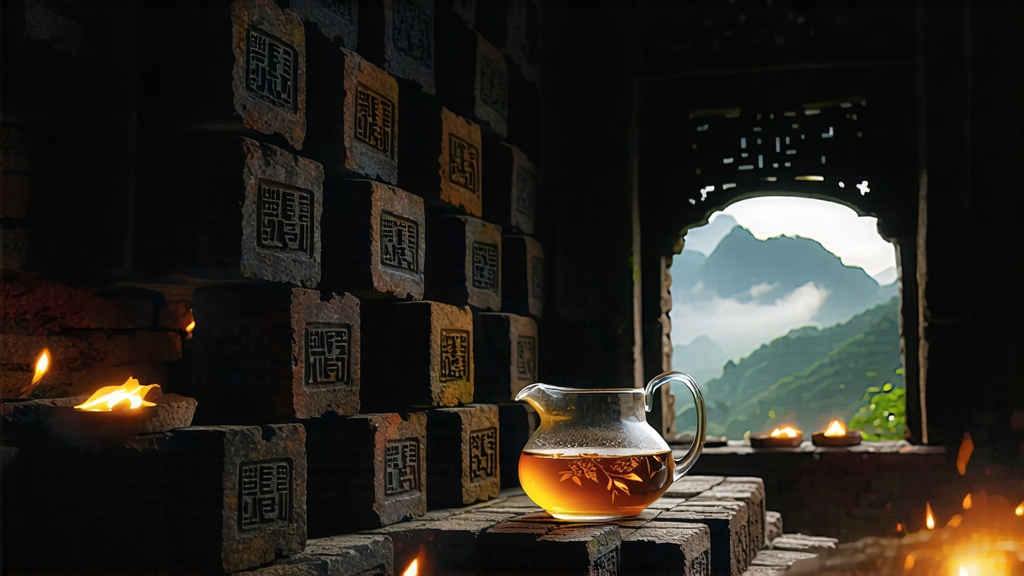
Tucked away in the humid, karst-pocked mountains of southern Guangxi, Liu Bao (literally “Six Forts”) has spent four centuries perfecting the art of controlled microbial alchemy. To most outsiders, Chinese dark tea begins and ends with Yunnan’s Pu-erh, yet Liu Bao is the older, quieter sibling—equally complex, more forgiving, and historically the tea that once fueled the diaspora of Cantonese coolies and the caravans of the ancient Tea-Horse Road. This article invites the global tea lover to discover why a single cup of well-aged Liu Bao can smell like dried longan, taste like cacao nib, and finish with the cooling snap of betel leaf—an experience closer to sipping a vintage Bas-Armagnac than to drinking what we casually call “tea.”
-
From Border Garrison to Global Commodity
The name Liu Bao refers to the six defensive forts established during the Ming dynasty along the upper reaches of the Cangwu River. By the early Qing, the forts had evolved into trading posts where Yao and Han farmers bartered rough mountain leaves for salt and iron. When the British East India Company began buying “bohea” in Canton, Liu Bao was compressed into 40-kilogram bamboo baskets, steam-shipped to Hong Kong, and re-exported to Malaya where tin-mine workers believed it cured dysentery and “cut the grease” of a rice-heavy diet. Cargo manifests from 1886 list Liu Bao alongside opium and gambier, proof that this tea once moved in the same global currents that shaped the modern world. -
The Micro-terroirs of a Single County
Today the protected geographical indication covers only 2,000 km² around the townships of Liubao, Shiqiao, and Hejie. Within this pocket, elevation ranges from 200 m along the river to 1,200 m on the limestone ridges. The highest gardens, often wrapped in cloud until noon, give leaves that age into orchid and sandalwood; the lower, warmer plots yield the gutsier, tar-and-liquorice profiles prized in Chaozhou teahouses. There is no official cru system, but collectors speak of “Hejie honey,” “Tangping betel,” and “Wuli camphor” the way Burgundy traders evoke Gevrey versus Chambolle. -
Crafting the Tea That Breathes
Liu Bao belongs to the “hou fajiao” (post-fermentation) family. Yet unlike the shou Pu-erh that is piled in heaps for 45 days, Liu Bao undergoes a gentler 90-day “wet basket” ferment. Fresh leaves are withered under mountain mist, wok-killed at 180 °C until the edges curl like tiny scrolls, then rolled until the cell walls weep green juice. The semi-dry leaves are stuffed into 30-kilogram bamboo baskets woven from three-year-old mao zhu; the weft is loose enough that airborne microbes—mostly Aspergillus niger, Blastobotrys adeninivorans, and a local strain of Brettanomyces—can hitch a ride. Over the next three months the baskets are turned every ten days, moistened with river water filtered through limestone, and monitored by masters who judge readiness by the smell alone: when the green grass note collapses into something between dried jujube and soy-caramel, the tea is “ripe.” After fermentation the leaves are sun-dried on raised bamboo racks, then moved to clay storehouses whose walls breathe with the same 70–85 % humidity that matures Shaoxing wine. There they sleep for a legal minimum of one year, but the market rarely touches anything younger than five. -
The Language of Aroma
A 2009 study at the Guangxi Institute of Food Science identified 73 volatile compounds unique to Liu Bao, among them sotolon (the maple-syrup molecule found in old Semillon) and 3-methylbutanal that recalls dark chocolate. In cupping jargon, a 10-year Liu Bao should present “betel-nose” (the cooling, almost dental note of Piper betle), “longan throat” (a honeyed mid-palate), and “camphor finish” (a lingering coolness in the nasal cavity). Flaws are equally codified: “blue